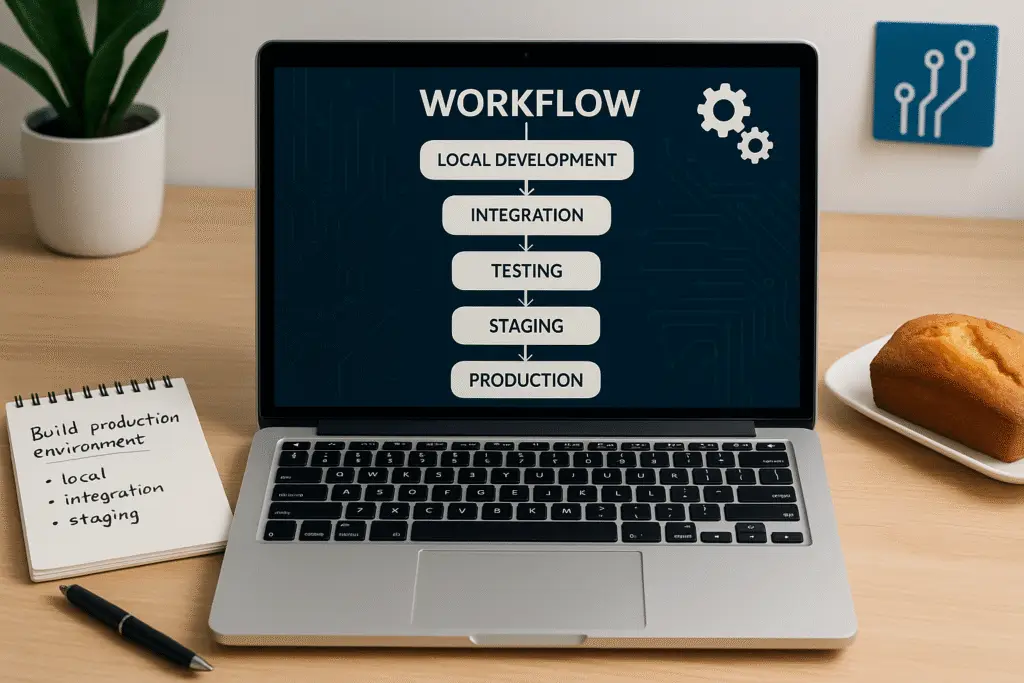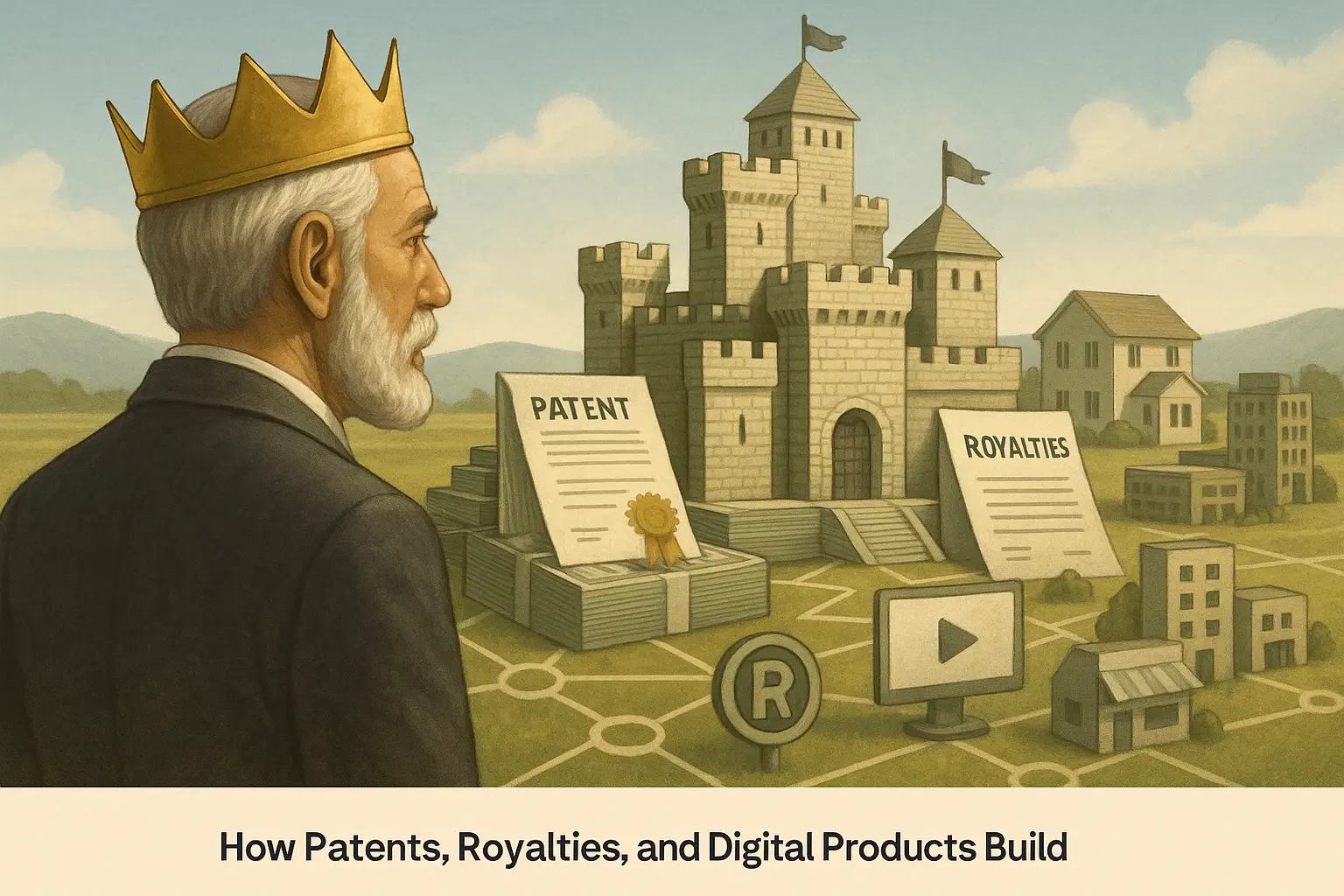Workflow environments are crucial in the development of production-ready systems, helping to structure and sequence workflows effectively. The common stages of workflow environments include local development, integration, testing, staging, and production. Each stage serves a distinct purpose, helping developers ensure that their workflows are functional, reliable, and maintainable over time.
To illustrate the significance of these stages, consider the analogy of introducing a new cake in a bakery. The process begins in the kitchen, which represents local development, where recipes are experimented with, laying the groundwork for what will eventually become a finished product. From there, feedback from family members is gathered, akin to the integration stage, where collaboration with colleagues is essential to refine the workflow. The next phase is analogous to testing, which involves evaluating the cake’s presentation and flavor before it is served to guests, validating its quality. Once the cake is perfected and ready to be distributed, it is moved to production, where it is sold to real customers.
In practical terms, when developing workflows, it’s easy for those without a programming background to jump straight to the final version, attempting to build a complete workflow without understanding the structured staging process. For example, when creating an AI tool to classify customer support tickets from a platform like Zenesk, developers often feel the pressure to connect nodes and deliver functionality immediately. However, the best practice is to start with local development, experimenting with variables within a controlled environment. This could involve using a chat trigger node to send predefined input to test the AI agent’s capabilities, allowing for initial testing before involving real data.
The Bakery Analogy: Understanding Workflow Stages
Local Development, Integration, Testing, Staging, and Production are the five essential stages in workflow development that can be visualized effectively through a bakery analogy. Let’s explore each stage in detail.
Stage 1: Mastering Local Development
Starting with Local Development, imagine you are a baker experimenting with a new cake recipe in your kitchen. Here, you are in a safe space to explore and refine your idea. Similarly, in workflow development, local development is where programmers build and test components of their workflows using simulated or sample data. It allows developers to run experiments, test ideas, and ensure that the basic building blocks are functioning correctly. During this phase, you might not worry too much about the aesthetics or the overall quality; the focus is on getting the infrastructure set up and making sure all connections within the workflow are properly aligned.
Step 2: Navigating Integration Environment
Next, we move on to Integration. Just as a baker may decide to ask family members for feedback after testing a cake, integration is about collaborating with others to gather insights and make necessary adjustments. In this phase, developers work with different teams or stakeholders to coordinate the flow of data and ensure everyone is on the same page regarding input formats and expected outputs. For example, if you’re integrating a customer support tool like Zenesk, you might need to establish what data is sent to your workflow and in what format. This collaboration is crucial for fine-tuning the workflow to meet user needs and expectations.
Stage 3: Testing Your Workflow for Accuracy
Once the integration phase is complete, it’s time for Testing. Think of this as the stage where you perfect the cake’s presentation and flavor before serving it at a family dinner. In workflow development, it involves validating the entire system’s performance under various conditions to ensure it can handle the expected load. For instance, if you anticipate handling 10,000 customer support tickets weekly, you’ll want to test your workflow’s ability to process that volume without errors. This phase often includes running automated batch tests with real data to compare outputs from the AI against expected results. It’s all about ensuring that the workflow can navigate real-world scenarios and deliver consistent results.
Transitioning to Staging: Testing in Reality
After testing, the Staging environment serves as a final rehearsal before the big production debut. In our bakery analogy, this is like having a soft opening where you test operations with select customers. Here, developers will run their workflows in a near-production environment, potentially receiving live data but refraining from affecting the end users yet. This step helps identify any last-minute issues that need resolving before the workflow is fully deployed.
Step 4: Going Live – The Production Environment
Finally, we arrive at Production, the moment of truth where the cake is finally for sale in your bakery. In workflow development, this means that the project is live, and users are interacting with it in real-time. Developers may choose to implement logging at this stage, tracking inputs and outputs to ensure everything runs smoothly and providing a way to enhance the system based on user interactions. This is the phase where the system operates within the ecosystem, responding to actual events and providing value to end users.
Common Challenges and Best Practices
The development of workflows can often be fraught with pitfalls that can hinder productivity and result in inefficiencies. By identifying these common issues and applying best practices, developers can streamline their processes and enhance overall outcomes. Here are several key challenges faced during workflow development, alongside solutions to navigate them effectively.
One frequent pitfall is the temptation to build the final version of a workflow right away. Many developers, especially those without a technical background, attempt to create a complete solution without following a systematic approach. This often leads to complications when trying to test the workflow with real input data, particularly when external systems, like customer support tools, are involved. Instead, the best practice is to start with local development, where the focus is on building a foundational version of the workflow.
Another crucial aspect is the sequence of the build stage. Every workflow should be divided into different environments—local development, integration, testing, staging, and production—each serving a distinct purpose. This allows developers to test and refine their processes in a controlled manner.
Tools and Resources for Workflow Development
Building and managing workflows effectively requires the right tools. Here’s a curated list of essential resources that can enhance your workflow development skills, along with explanations of how each tool fits into the workflow process.
- n8n: This open-source workflow automation tool allows you to connect different applications and automate tasks easily.
- Zendesk: A customer support tool that helps manage customer inquiries effectively.
- OpenAI: Integrating AI models into your workflows enables intelligent processing of data.
- Google Sheets: Useful for documenting testing scenarios by comparing expected outputs against those produced by your AI models.
Conclusion: Recap and Next Steps
In conclusion, each stage from local development to production plays a crucial role in crafting effective workflows. Engaging with external resources, testing thoroughly, and learning from each stage back to the planning of the next are vital to becoming proficient in workflow design. For continuous improvement in your skills, don’t hesitate to explore community resources and discussions to build on what you’ve learned from each step.



